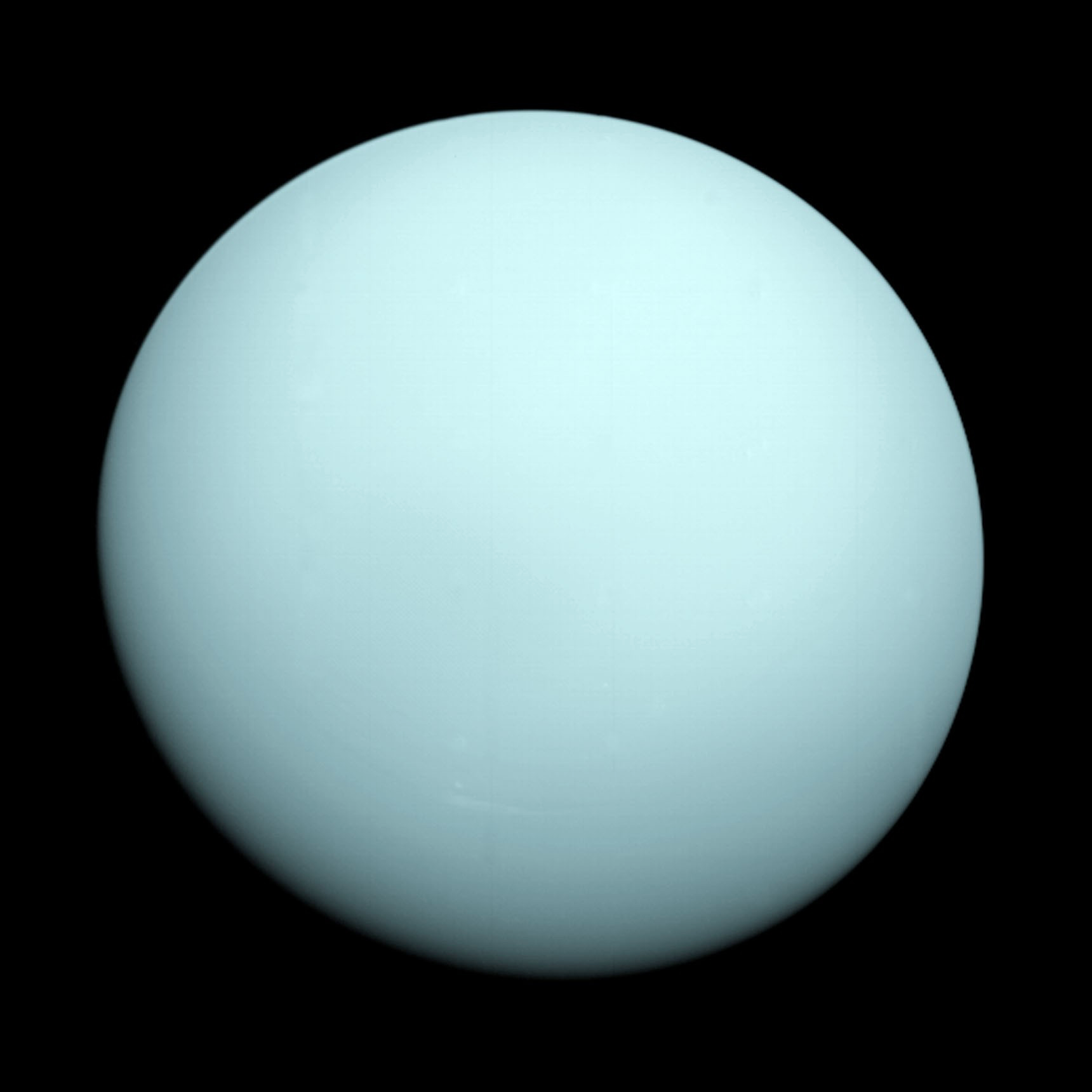Old gas blob from Uranus found in vintage Voyager 2 data

Buried inside data that NASA's iconic Voyager 2 spacecraft gathered at Uranus more than 30 years ago is the signature of a massive bubble that may have stolen a blob of the planet's gassy atmosphere.
That's according to scientists who analyzed archived Voyager 2 observations of the magnetic field around Uranus. These measurements had been studied before, but only using a relatively coarse view. In the new research, scientists instead looked at those measurements every two seconds. That detail showed what had previously been missed: an abrupt zigzag in the magnetic field readings that lasted just one minute of the spacecraft's 45-hour journey past Uranus.
The tiny wobble in the Voyager 2 data represents something much larger since the spacecraft was flying so fast. Specifically, the scientists behind the new research believe the zigzag marks a plasmoid, a type of structure that wasn't understood particularly well at the time of the flyby in January 1986.
Related: Photos of Uranus, the tilted giant planet
But by now, plasmoids have earned scientists' respect. A plasmoid is a massive bubble of plasma, which is a soup of charged particles. Plasmoids can break off from the tip of the sleeve of magnetism surrounding a planet like a teardrop.
Scientists have studied these structures at Earth and nearby planets, but never at Uranus or its neighbor Neptune, since Voyager 2 is the only spacecraft to date ever to visit those planets.
Scientists want to know about plasmoids because these structures can pull charged particles out of a planet's atmosphere and fling them into space. And if you change a planet's atmosphere, you change the planet itself. And Uranus' situation is particularly complicated because the planet rotates on its side and its magnetic field is skewed from both that axis and the plane all the planets lie in.
Get the world’s most fascinating discoveries delivered straight to your inbox.
Because Voyager 2 flew straight through this plasmoid, scientists could use the archived data to measure the structure, which they believe was about 250,000 miles (400,000 kilometers) across and could have stretched 127,000 miles (204,000 km) long, according to a NASA statement.
Ideally, scientists would piece together more observations of Uranus' magnetic field, enough to better understand how this phenomenon has shaped the planet over time. But that will require another spacecraft visit the strange sideways world.
The research is described in a paper published in August in the journal Geophysical Review Letters. NASA announced the finding on Wednesday (March 25).
- Uranus may have odd, strobe-like magnetic field
- Why is Uranus on its side? Incredible simulations could solve the mystery.
- How did Uranus form?
Email Meghan Bartels at mbartels@space.com or follow her @meghanbartels. Follow us on Twitter @Spacedotcom and on Facebook.
OFFER: Save at least 56% with our latest magazine deal!
All About Space magazine takes you on an awe-inspiring journey through our solar system and beyond, from the amazing technology and spacecraft that enables humanity to venture into orbit, to the complexities of space science.
Meghan is a senior writer at Space.com and has more than five years' experience as a science journalist based in New York City. She joined Space.com in July 2018, with previous writing published in outlets including Newsweek and Audubon. Meghan earned an MA in science journalism from New York University and a BA in classics from Georgetown University, and in her free time she enjoys reading and visiting museums. Follow her on Twitter at @meghanbartels.





